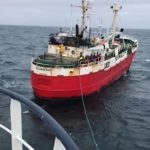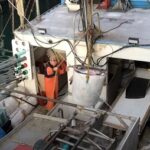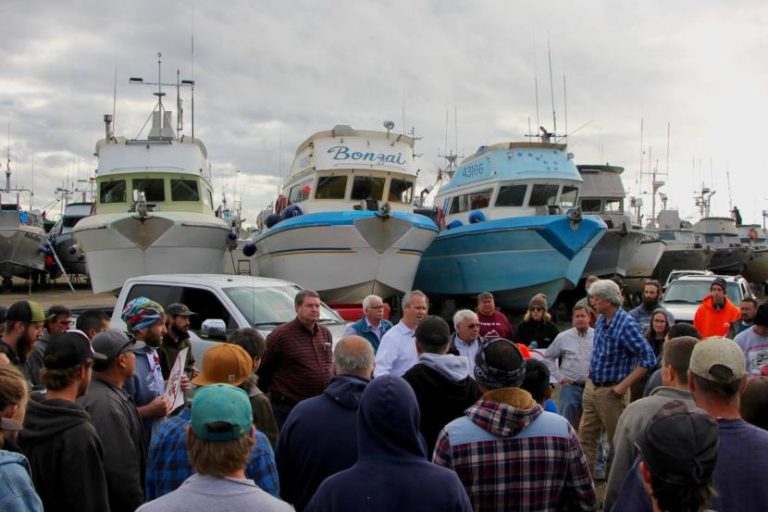Tag Archives: pacific whiting
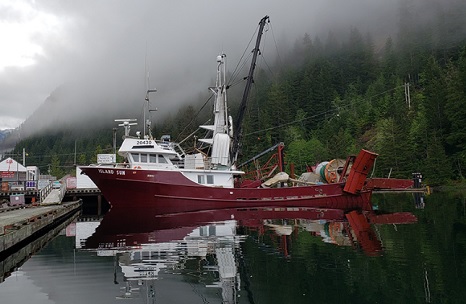
Could this, like spot prawns, be our next local seafood success? The hake catch is six times the size for wild salmon.
B.C.’s hake, also known as Pacific whiting or Merluccius productus, is a transboundary species that crosses Canadian and American waters. Both countries share management of the short-lived, bountiful species under a joint fishery treaty. “Their stock is healthy,” said Bruce Turris, executive manager of the Canadian Groundfish Research and Conservation Society. Turris, who represents the hake fishery on the joint management treaty and has worked with hake for more than 35 years, notes that Canada only harvested around 60 per cent of its total allowable catch in 2019. “We’re still not fully utilizing the resource,” he says. But “it’s not a resource that’s easily accessible,” said Turris, citing a steep investment requirement into the fishery. >click to read< 08:43
Poor Ocean Conditions Hit West Coast Fisheries Hard
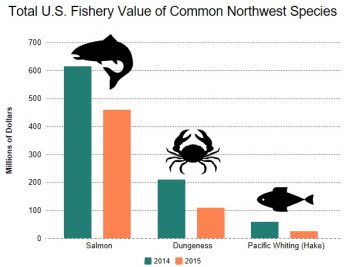 United States commercial fisheries are doing fine overall, but fishermen on the West Coast are hurting. An 2015 annual report out Wednesday from the National Oceanic and Atmospheric Administration shows a stark fall-off in the big seafood money-makers in the Pacific Northwest. Nationally, 2015 was an above average year in terms of catch rate, commercial value and national seafood consumption. “On dinner plates, the average American added nearly an extra pound of seafood,” said Richard Merrick, Chief Scientists of NOAA Fisheries during a call with reporters. But this rise in consumption didn’t really help the Oregon and Washington fishing industry because the crab and fish weren’t there to catch. NOAA Fisheries scientists are attributing the low West Coast returns to abnormal conditions in the Pacific that are linked to climate change. Read the story here 19:11
United States commercial fisheries are doing fine overall, but fishermen on the West Coast are hurting. An 2015 annual report out Wednesday from the National Oceanic and Atmospheric Administration shows a stark fall-off in the big seafood money-makers in the Pacific Northwest. Nationally, 2015 was an above average year in terms of catch rate, commercial value and national seafood consumption. “On dinner plates, the average American added nearly an extra pound of seafood,” said Richard Merrick, Chief Scientists of NOAA Fisheries during a call with reporters. But this rise in consumption didn’t really help the Oregon and Washington fishing industry because the crab and fish weren’t there to catch. NOAA Fisheries scientists are attributing the low West Coast returns to abnormal conditions in the Pacific that are linked to climate change. Read the story here 19:11
Poor US Pacific whiting fishing set to leave market short of surimi
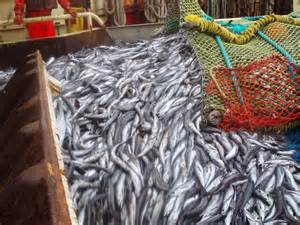 This fall’s catch of US hake — also called pacific whiting — has been dismal, which will mean lower volumes of surimi for a hungry market. With many American producers having geared themselves toward processing large amounts of surimi, some worry that they won’t be able to fill customers’ orders. With surimi base output dropping in Asia, high surimi demand, and an increased US hake quota, many American catchers-processors, motherships and shore-based processors had set up to produce larger amounts of surimi in 2015 than they normally would. Read the rest here 14:01
This fall’s catch of US hake — also called pacific whiting — has been dismal, which will mean lower volumes of surimi for a hungry market. With many American producers having geared themselves toward processing large amounts of surimi, some worry that they won’t be able to fill customers’ orders. With surimi base output dropping in Asia, high surimi demand, and an increased US hake quota, many American catchers-processors, motherships and shore-based processors had set up to produce larger amounts of surimi in 2015 than they normally would. Read the rest here 14:01







































